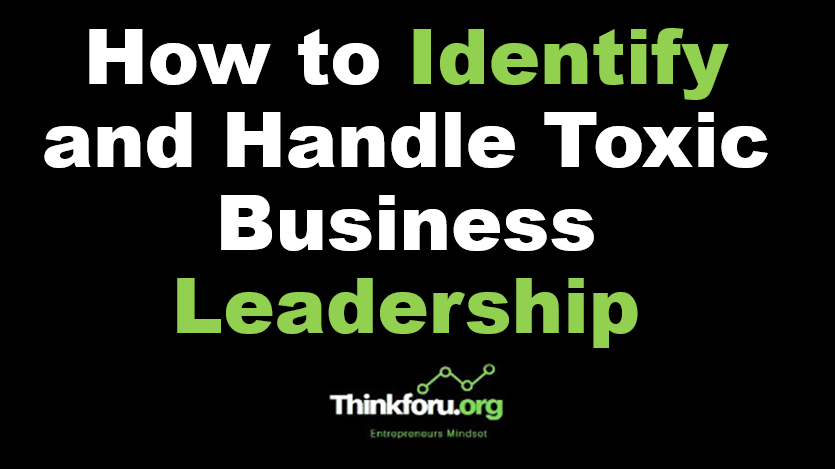How to Identify and Handle Toxic Business Leadership
How to Identify and Handle Toxic Business Leadership
Toxic business leadership can be detrimental to the success and well-being of a company, its employees, and its customers,
Cover Image of How to Identify and Handle Toxic Business Leadership
Toxic behavior, micromanaging, playing favorites, withholding information, unrealistic demands, refusing to take responsibility, low morale, high turnover, negative work environment, feedback, training, and coaching, Here are some ways to identify and handle toxic business leadership:
1. Look for signs of toxic behavior: Toxic leaders often exhibit behaviors such as micromanaging, playing favorites, withholding information, making unrealistic demands, and refusing to take responsibility for their actions. These behaviors can lead to low morale, high turnover, and a negative work environment.
2. Collect feedback: Ask employees for feedback on their experiences with their managers and leaders. This can be done through anonymous surveys or one-on-one conversations. Pay attention to patterns of feedback and take appropriate action if necessary.
3. Provide training and support: Some toxic behaviors can be corrected through training and support. Offer training on leadership skills, communication, and conflict resolution. Encourage leaders to seek coaching or counseling if needed.
4. Hold leaders accountable: Set clear expectations for behavior and hold leaders accountable for their actions. Establish consequences for toxic behavior, and be consistent in enforcing them.
5. Take action: If toxic behavior persists despite efforts to correct it, consider removing the leader from their position or terminating their employment. This may be a difficult decision, but it is necessary to protect the well-being of the company and its employees.
By identifying toxic behavior, providing support and training, holding leaders accountable, and taking action when necessary, you can help create a positive and productive work environment.
6. Foster a culture of respect and trust: To prevent toxic behavior in the first place, it is important to foster a culture of respect and trust within the organization. This can be done by promoting open communication, encouraging collaboration, recognizing and rewarding positive behavior, and setting clear expectations for behavior.
7. Lead by example: Leaders set the tone for the entire organization, so it is important for them to lead by example. This means modeling positive behavior and holding themselves accountable for their actions.
8. Encourage feedback: Encourage employees to provide feedback on the organization's leadership, culture, and work environment. This can help identify potential issues before they become major problems.
9. Seek outside help: If the toxic behavior is pervasive and has been going on for some time, it may be necessary to seek outside help. This could include consulting with an HR professional or bringing in an outside consultant to help address the issues.
Note: toxic business leadership can have a negative impact on the success and well-being of an organization. It is important to identify toxic behavior, provide support and training, hold leaders accountable, and take action when necessary. By fostering a culture of respect and trust, leading by example, encouraging feedback, and seeking outside help if needed, organizations can create a positive and productive work environment.
